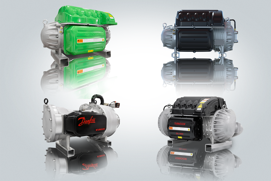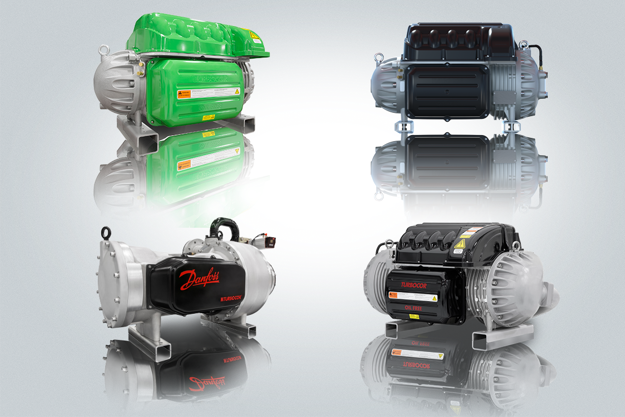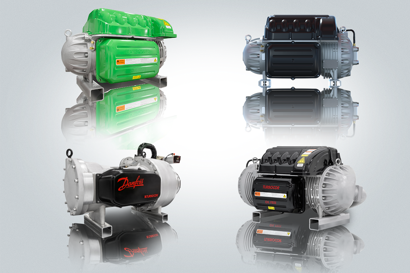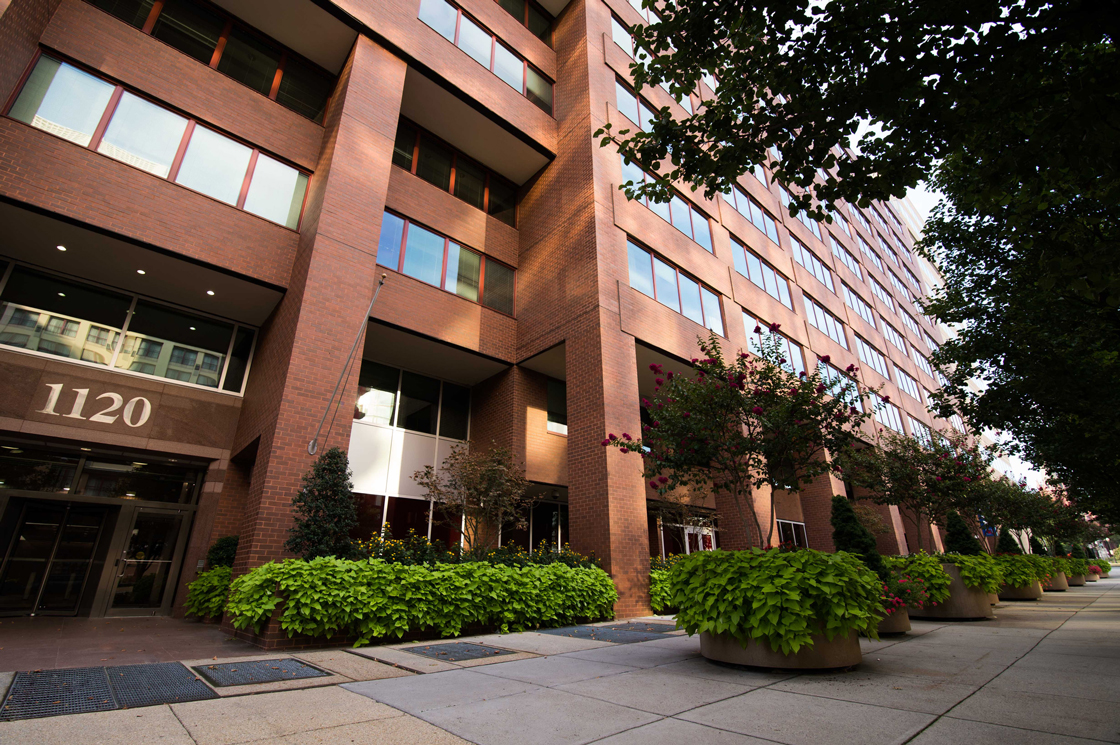
With two 600-ton high-efficiency oil-free, magnetic bearing chillers
In the competitive commercial real estate market, providing leasable office space can push building owners to consider new strategies and solutions to improve net operating income by reducing operational costs, while also offering attractive benefits for tenants. For Tim Blanch of Washington, DC-based real estate development and management firm S.C. Herman & Associates, this means placing high value on technologies that improve energy efficiency, reducing supplemental cooling costs, and improving occupant comfort.
So, when the 12-story, 505,000-rentable square-foot office building at 1120 Vermont Avenue NW was renovated in 2016 to better utilize rental space, a brand-new central plant was constructed with new chillers, pumps, boilers, and controls — including two 600-ton high-efficiency oil-free, magnetic bearing chillers from Arctic Chiller Group.
“When we met with Tim Blanch at S.C. Herman & Associates, we quickly learned that he wanted to get the best efficiencies while also providing the best environment for people in the building,” said Patrick Legare, senior vice president of Arctic Chiller Group.
Not only does Washington, DC, have the most aggressive clean energy program in the country — targeting 100 percent renewable energy in 2032, zero-emission vehicles in 2045, and net-zero building codes in 2026, the building is occupied primarily by GSA (US General Services Administration) tenants, dictating an additional layer of energy efficiency. In order to maintain a GSA lease, the building is required to maintain a 75th percentile ENERGY STAR rating.
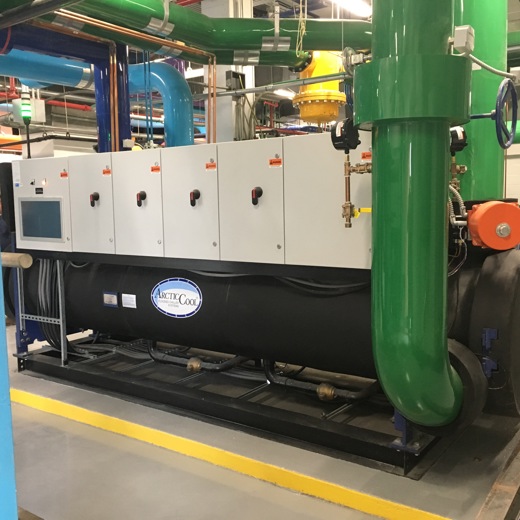
Legare explained, “We were able to work with Tim to design chillers for 1120 Vermont Avenue NW that would specifically and uniquely meet the needs of the application and his goals — from reconfiguring our chiller design to fit into low profile areas of the new central plant to testing in 2017 and then fully incorporating in 2018 our new Arctic Boost option, which allows low-lift operation of the chillers to maximize efficiency throughout the year.”
To reduce tenant supplemental cooling system costs, the 24-hour supplemental cooling was converted from a condenser water system supporting compressor driven self-contained units throughout the building to chilled water. The two new Arctic water-cooled chillers with Arctic Boost option, which are each equipped with four Danfoss Turbocor® TT400 (150-ton) oil-free, magnetic bearing compressors, can achieve minimal load capacity (40-ton, 24-hour load) as needed to reduce compressor cycling and energy consumption while also meeting comfort demands.
Through oil-free, variable speed design, Danfoss Turbocor® TT compressors provide high levels of full- and part-load energy efficiency, as well and zero performance degradation over the life of the compressor.
“In 2018, we enabled low-lift capabilities in Danfoss Turbocor® compressors,” explained Ken Koehler, senior business development manager at Danfoss. “For Arctic Chiller Group, the technology extends the operating envelope of their air- and water-cooled chillers by about 40 percent for either cold condenser water or cold ambient air. This allows the chillers to run for an extended period of time in an inverted condition, eliminating the need for other cooling systems to supplement the chiller load — reducing costs, system complexity, and energy consumption.”
Specifically, the Arctic Boost option allows the compressor to run at a 1.2 pressure ratio by utilizing a refrigerant pump to ensure proper compressor motor cooling during low-lift operation. This eliminates the need for a water-side economizer, which Blanch noted is highly desirable for buildings striving to meet water-side economizer code requirements.
“By eliminating the limitations at slower compressor speeds, the chiller can continue to run with an efficiency below 0.1 kW/ton,” Legare explained. “Without the Arctic Boost option, a free cooling system or smaller chiller would be used to handle the low load. But with the Arctic Boost option, these additional first costs can be eliminated at the design stage.” In addition, the low lift feature incorporated into all Danfoss Turbocor® TT series compressors extends the operating envelope, thereby allowing operation at low pressure ratios and higher speeds, delivering a higher system capacity.
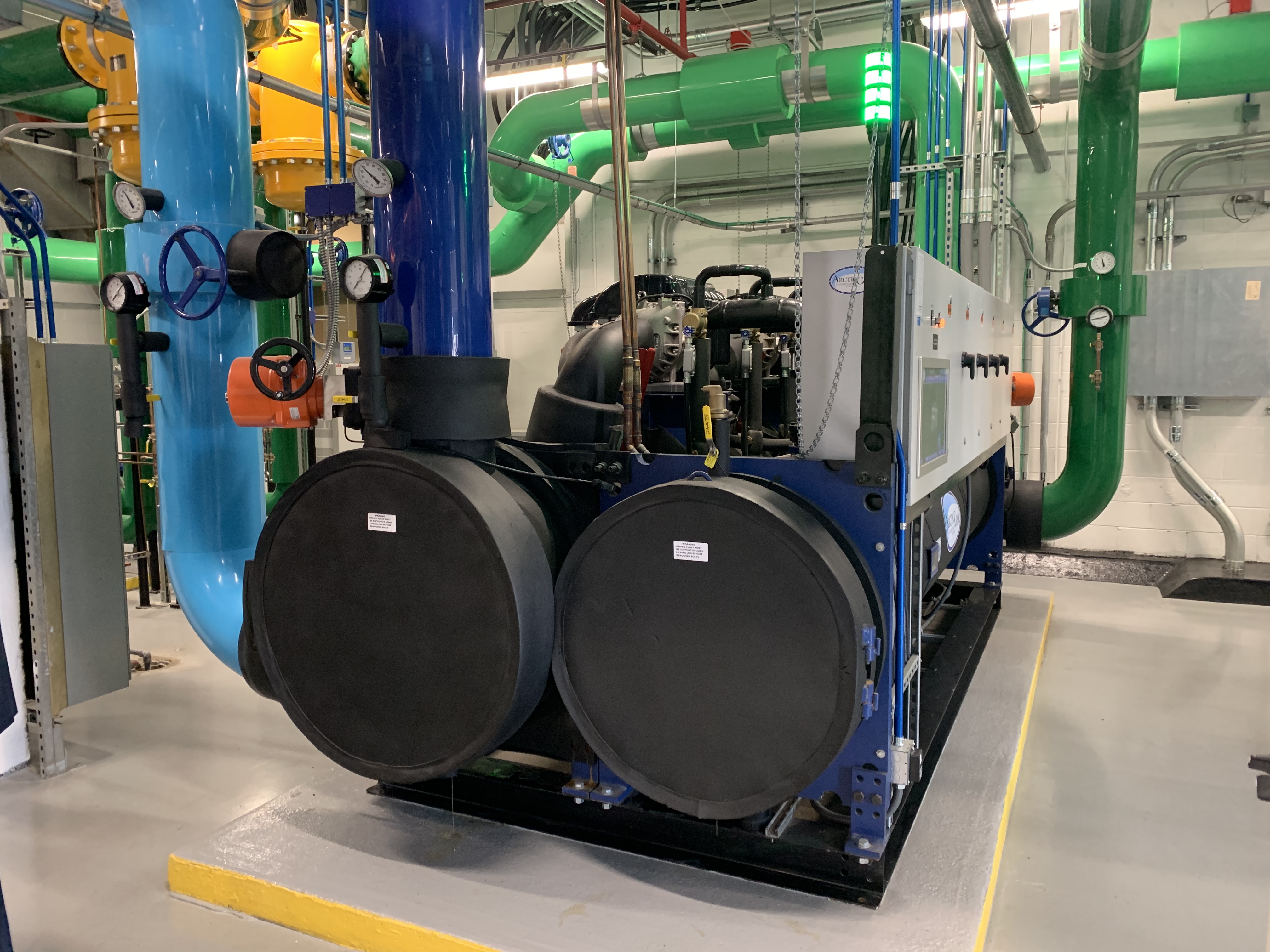
“Arctic Chiller Group and Danfoss have been strong partners for more than 10 years — enabling us to provide features that increase capacity and improve system efficiency,” continued Arctic Chiller Group’s Senior Vice President, Sales and Marketing, Mark Rogan. “It’s hard to improve a high industry benchmark for efficiency like the Danfoss Turbocor® compressor, but Arctic Boost has proven to supplement pre-existing savings in off peak or lower load conditions.”
At 1120 Vermont Avenue NW, the new oil-free, magnetic bearing chillers with Arctic Boost option are enabling Blanch to consistently and predictably achieve a system 0.08 kW/ton efficiency.
“That’s incredible. That’s almost unheard-of levels of efficiency. This technology has tripled winter efficiency,” Blanch said, noting that the building’s mechanical load can range from 40 tons when unoccupied to as much as 200 tons.
In fact, between December 2018 and March 2019, the building did not need to operate or control its water-side economizer at all — and, most importantly, the building is today reporting significant energy cost savings of more than $29,000 annually and projected total cost of ownership savings over 20 years in excess of $670,000.
But for Blanch, the operational savings are just part of the equation. “In this market, it’s not just about delivering outstanding building efficiencies; it’s also about creating an indoor environment that improves occupant health and has tangible, proven impacts on productivity.”
In fact, at S.C. Herman’s brand new 1441 L Street NW building, the central plant design focuses not only on the oil-free, magnetic bearing Arctic chillers with Danfoss Turbocor® compressors with low-lift operation, but also takes advantage of 100 percent fresh outdoor air and chilled beam technology, optimizing the air quality within the building while also ensuring the most comfortable, controllable, and efficient environment.
“For me, there’s no hesitation in testing a new technology that promises another level of efficiency. It’s not about models; it’s about looking for solutions that are practical and that actually perform— especially in today’s market. And the Arctic chillers with Danfoss Turbocor® compressors and Arctic Boost option is just an amazing technology with tremendous potential for the built environment,” Blanch said.
Legare added, “Through great teamwork, Arctic Chiller Group is excited to make this technology available on all of our water-cooled and air-cooled chillers — opening up a new era of energy-saving possibilities for building owners.”
View related products
-
if (isSmallPicture) {


 Turbocor®
Turbocor®Danfoss is the leading manufacturer of oil-free compressors and is the pioneer of the Danfoss Turbocor® compressor - the world’s first oil-free magnetic bearing compressor for the HVAC industry.

